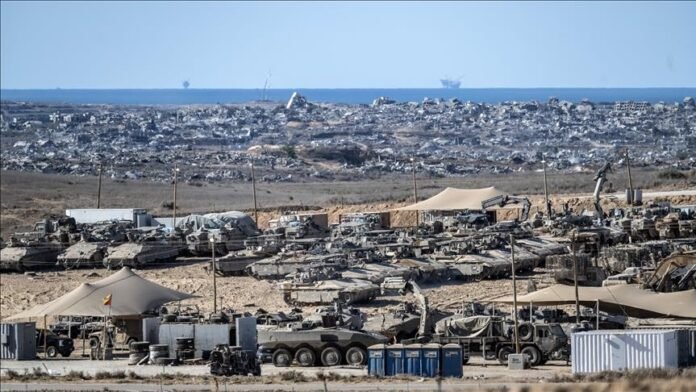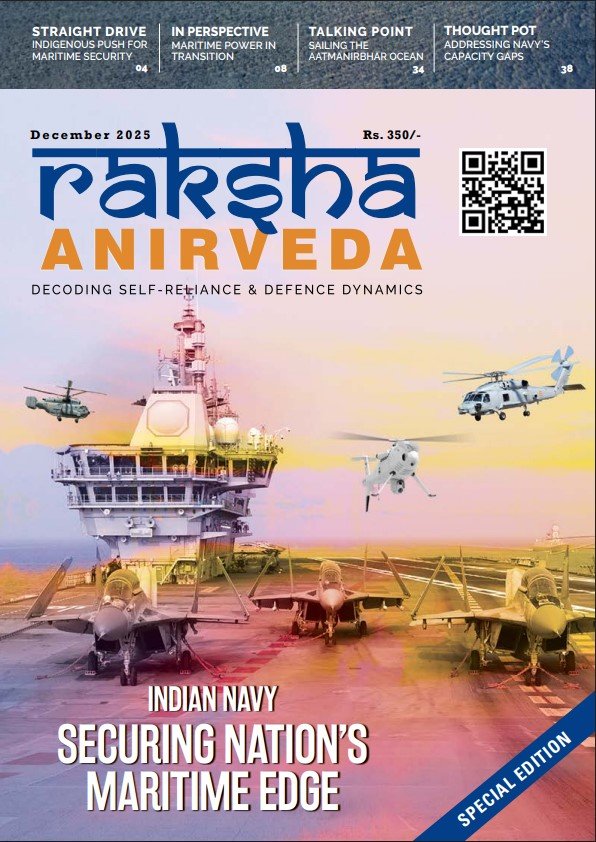The Gaza ceasefire, brokered under Donald Trump’s 20-point plan, marks a fragile halt in a war that has raged for two years. Hamas released all 20 living hostages and four bodies in exchange for nearly 2,000 Palestinian prisoners, while Israel retained control of 53% of Gaza, the first of three planned withdrawals. The deal’s first phase remains incomplete: unrestricted aid entry, reopening of Rafah, and the return of 24 missing bodies. A US-led multinational force will monitor the truce, with Gaza to be run temporarily by a technocratic committee overseen by a “Board of Peace” chaired by Trump before being handed to a reformed Palestinian Authority.
The ceasefire may pause the war, but peace is still distant. The contradictions remain buried: Israel wants disarmament of Hamas and exclusion from governance, while Hamas insists on a full Israeli withdrawal from Gaza and rejects disarmament without a Palestinian state. Netanyahu’s focus is on the West Bank, not peace, and Hamas on reprieve. For Gaza, this accord is a photo-op, not a turning point. Neither of the warring sides was part of the much hyped ceasefire ceremony. Real peace will come only when both sides resolve all outstanding issues and extra-regional politics stop exploiting the situation.
The Gaza ceasefire may pause the war, but peace is still distant. The contradictions remain buried: Israel wants disarmament of Hamas and exclusion from governance, while Hamas insists on a full Israeli withdrawal from Gaza and rejects disarmament without a Palestinian state
A Pause Without Conviction
The truce brokered through Donald Trump’s new peace plan has achieved what most ceasefires do: it stopped the fighting, freed some captives, and opened a path for aid. Beyond that, it offers little. The 20-point plan is more a list of operational measures than a vision for the future. It creates space for diplomacy but no path to resolution. The small American presence in Israel is intended as a stabilising influence, while responsibility for Gaza’s governance is outsourced to Egypt, Qatar, Turkey, Indonesia, and the UAE. These states share neither strategy nor trust, and none are prepared to inherit Gaza’s chaos. Responsibility is dispersed, while ownership of the truce is effectively absent.
The ceasefire currently holds because all parties are exhausted. Israel’s campaign has reached its limit, and Hamas has been bled by siege and isolation. But weariness has never ended the Middle Eastern war. Every quiet period here has been a prelude, not an ending.
The Inevitable Violations
Even before the ink dried, violations began. Israeli drones struck a group of Palestinians in Shuja’iyyah, killing six men who had returned to inspect their destroyed homes. Israel maintains that it crossed a restricted area. Meanwhile, Hamas has used the lull to reassert control within Gaza, targeting at least 32 individuals who resisted its authority. The world may label this a “truce,” but for Gaza it is an intermission—a moment between bombings, raids, and grief. The United States may claim progress, but on the ground, little has changed beyond the temporary cessation of hostilities.
Calculations and Leverage
Hamas approaches the ceasefire as a tactical manoeuvre. By involving Washington and Arab capitals, it aims to limit Israel’s operational freedom. Its bet is narrow: that the US, eager for a diplomatic win, will restrain Israel’s next moves. Hamas counts on fleeting US attention and measures success in persistence, not promises.
Israel reads the truce differently. Netanyahu has avoided declaring victory or closure. The war, from Israel’s perspective, is unfinished business. The truce is simply a controlled pause, a way to maintain strategic flexibility. Calm is conditional, defined by Israel’s discretion, not by a mutual commitment to coexistence.
The truce brokered through Trump’s peace plan has achieved what most ceasefires do: it stopped the fighting, freed some captives, and opened a path for aid. Beyond that, it offers little. The 20-point plan is just a list of operational measures. It creates space for diplomacy but no path to resolution
Regional Hesitation
Arab governments support a ceasefire at no cost but will not police Gaza at any expense. No one wants to commit troops or credibility to a fragile and undefined mission.
The plan’s weakness is obvious. It avoids the central issue of Palestinian statehood. Rebuilding without sovereignty means dependency dressed as progress. Without a political horizon, reconstruction becomes an illusion that stabilises control, not freedom.
Cairo and Doha understand this dilemma. Egypt sees Gaza as both a security risk and a tool for regional leverage. Qatar sees mediation as visibility but also exposure. Both want calm but not complicity.
Fault Lines in Palestinian Politics
The ceasefire has once again ignited old rifts within the Palestinian leadership. Mahmoud Abbas’s handshake with Trump in Sharm el-Sheikh revived the image of the Palestinian Authority but not its relevance. The PA was absent from negotiations and remains peripheral to what follows.
Plans for an international board, possibly led by Tony Blair, to oversee reconstruction have rekindled Palestinian suspicion of foreign oversight. History shows that “assistance” often replaces autonomy.
The ceasefire has again ignited old rifts within the Palestinian leadership. Mahmoud Abbas’s handshake with Trump in Sharm el-Sheikh revived the image of the Palestinian Authority but not its relevance. The PA was absent from negotiations and remains peripheral to what follows
Israel’s refusal to free Marwan Barghouti keeps the Palestinian politics fragmented and leverage in the Israeli hand. Within Gaza, authority is fractured. Rule is now exercised by armed groups, family networks, and informal militias. Any external mission will confront this fractured landscape long before addressing reconstruction.
Inside Gaza
Calm has not translated into order. The killing of journalist Saleh al-Jafarawi during clan fighting revealed the internal decay of Gaza’s social fabric. PA has broken into fragments. Rule now rests with armed groups, family networks, and informal militias. Any external mission entering Gaza will face this fractured landscape long before it deals with reconstruction.
For ordinary Gazans, the bombs have stopped, but the despair continues. Water is scarce, power unreliable, and leadership absent. The ceasefire has brought safety but not dignity. For many, the lull is a pause between ongoing suffering rather than a genuine chance for normalcy.
The Illusion of Resolution
Trump’s initiative may feel new, but it is familiar in practice. It manages crises rather than solving them. Ambition is limited, and the politics transactional. It offers a ceasefire without addressing the causes of war. It was more of a showbiz and Trump’s ego projection exercise. Guns may be silent for a while, but Palestinian sovereignty remains unaddressed. Israel continues to interpret this as acceptance, mistaking exhaustion for peace.
Calm has not translated into order. The killing of journalist Saleh al-Jafarawi during clan fighting revealed the internal decay of Gaza’s social fabric. Rule rests with armed groups, family networks, and militias. Any external mission will face this fractured landscape long before it deals with reconstruction
Between Survival and Statehood
This ceasefire is not a settlement. It is a stopgap. It buys time, not trust. True peace requires facing the hard questions of occupation, leadership, and legitimacy, none of which can be subcontracted to outsiders.
Gaza stands today between survival and statehood. It can remain a territory managed by others and divided within, or it can rebuild itself through inclusion and coherence. That choice lies with Palestinians, not with those who claim to represent them.
History has been a testimony. No agreement written for the Palestinians has endured. Only solutions built with Palestinians will endure. Until then, the ceasefire is an intermission, already giving way to the next round of violence.
The author, a PVSM, AVSM, VSM has had an illustrious career spanning nearly four decades. A distinguished Armoured Corps officer, he has served in various prestigious staff and command appointments including Commander Independent Armoured Brigade, ADG PP, GOC Armoured Division and GOC Strike 1. The officer retired as DG Mechanised Forces in December 2017 during which he was the architect to initiate process for reintroduction of Light Tank and Chairman on the study on C5ISR for Indian Army. Subsequently he was Consultant MoD/OFB from 2018 to 2020. He is also a reputed defence analyst, a motivational speaker and prolific writer on matters of military, defence technology and national security. The views expressed are personal and do not necessarily carry the views of Raksha Anirveda






